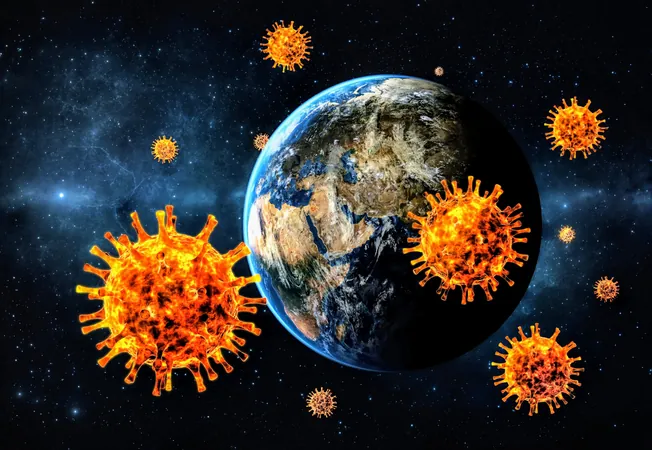
Shocking Findings: Homegrown Produce Near Fayetteville's Fluorochemical Plant Contaminated with Dangerous PFAS
2024-11-20
Author: Nur
Shocking Findings: Homegrown Produce Near Fayetteville's Fluorochemical Plant Contaminated with Dangerous PFAS
In a groundbreaking study, scientists have uncovered alarming evidence that residential garden produce grown near the Fayetteville Works fluorochemical plant in North Carolina is tainted with per- and polyfluoroalkyl substances (PFAS), posing a serious health risk to those who consume it. This research was a collaboration between experts from North Carolina State University, East Carolina University, and the Colorado School of Mines.
Detlef Knappe, the lead investigator and a professor of civil, construction, and environmental engineering at NC State, emphasizes the importance of this study. “It is often assumed that contaminated drinking water is the main pathway through which we are exposed to PFAS,” he explains. “However, our research highlights that consuming locally grown produce could be another significant route of exposure for people living in affected communities.”
The study, published in the Journal of Agricultural and Food Chemistry, meticulously analyzed 53 samples from five residential gardens in proximity to the Fayetteville Works facility. Researchers tested for 43 different PFAS compounds, with a focus on GenX—one of the most notorious chemicals linked to health risks.
Findings revealed that PFAS contamination levels in the produce reached as high as 38 nanograms per gram (ng/g). Particularly concerning was the discovery that water-rich crops like berries and figs exhibited the highest concentrations of these hazardous chemicals. Interestingly, data from frozen produce collected over several years showed a declining trend in PFAS levels from 2013 to 2019, potentially linked to efforts to reduce air emissions from the manufacturer.
But just how does this exposure risk compare to that of drinking contaminated water? The researchers established that for children consuming the highest contaminated produce noted in the study, daily intake of approximately 17 grams (about 10 blueberries) could result in similar exposure to drinking water containing the maximum allowable level of GenX as determined by the U.S. Environmental Protection Agency (EPA). Adults, on the other hand, would have to consume about 68 grams (or roughly 2.4 ounces) of these contaminated fruits and vegetables for an equivalent risk.
Furthermore, the experts assessed the chronic-exposure daily limit for the safe consumption of contaminated produce, citing that children aged 3 to 6 could typically consume 289 grams a day without exceeding safety margins. This allowance surpasses the general daily intake guidelines, yet researchers caution that these figures may be understated. The potential additive effects of other PFAS compounds were not fully factored into the risk assessment.
“This research is a wake-up call,” notes Knappe. “The presence of multiple PFEAs in the produce suggests a broader concern than previously recognized. Our findings underline that diet—alongside drinking water—serves as a critical pathway for human exposure to harmful substances.”
As residents near Fayetteville grapple with these unsettling revelations, the urgency for further investigation into the long-term health effects of PFAS exposure through food consumption has never been more pressing. The researchers call for more comprehensive studies to evaluate the toxicity of various PFEAs, ensuring that public health safety measures can be adequately proposed and implemented.




 Brasil (PT)
Brasil (PT)
 Canada (EN)
Canada (EN)
 Chile (ES)
Chile (ES)
 España (ES)
España (ES)
 France (FR)
France (FR)
 Hong Kong (EN)
Hong Kong (EN)
 Italia (IT)
Italia (IT)
 日本 (JA)
日本 (JA)
 Magyarország (HU)
Magyarország (HU)
 Norge (NO)
Norge (NO)
 Polska (PL)
Polska (PL)
 Schweiz (DE)
Schweiz (DE)
 Singapore (EN)
Singapore (EN)
 Sverige (SV)
Sverige (SV)
 Suomi (FI)
Suomi (FI)
 Türkiye (TR)
Türkiye (TR)